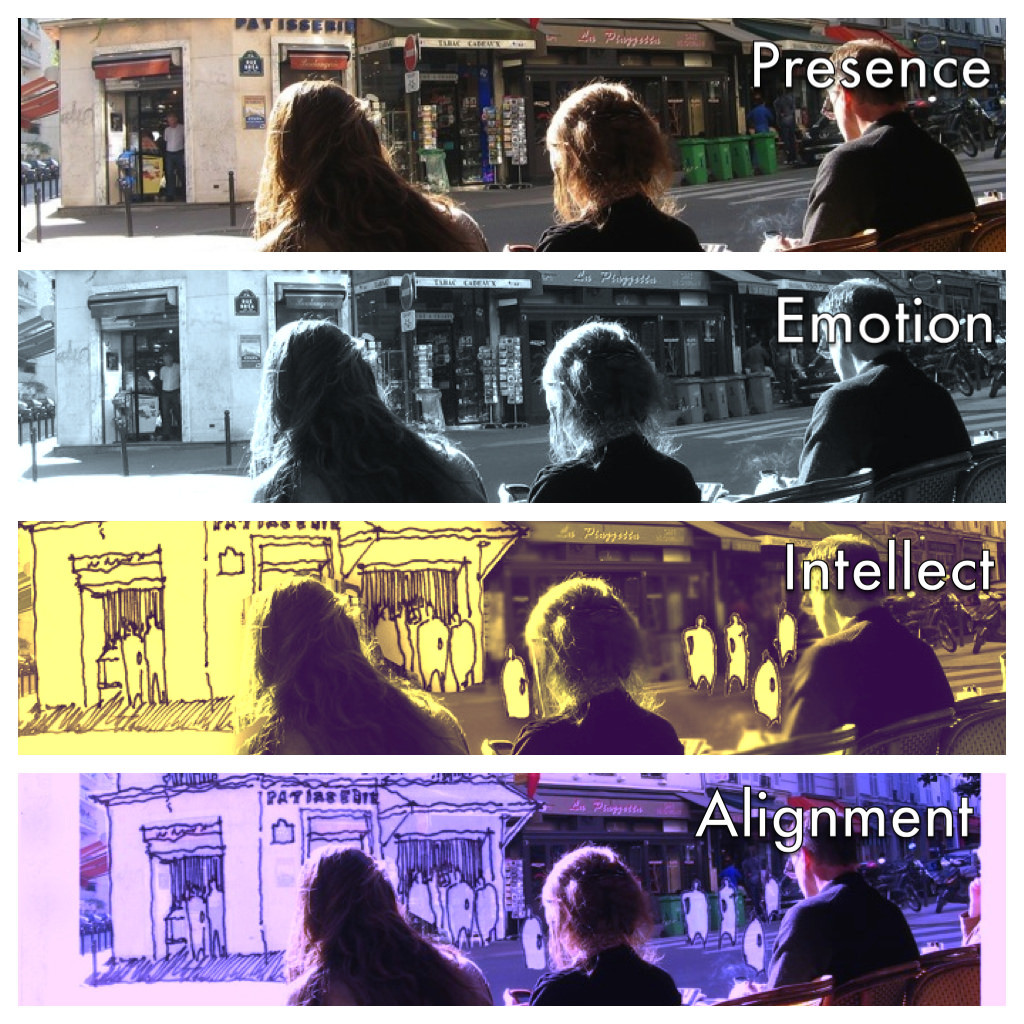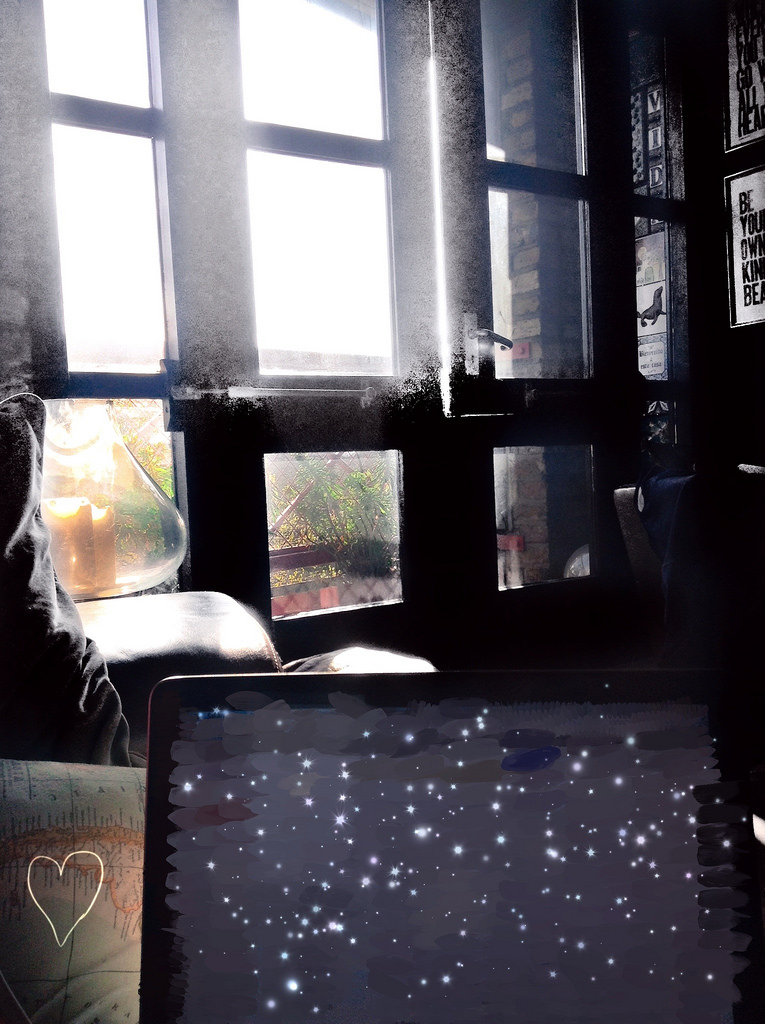After a long writing stretch (for papers, PhD, projects), I have come to a fork in the road in my thinking. These can be fruitful times when all these different orbits collide into one another, but for now I am left with some initial thoughts and more questions.
The texts that have been influencing my thinking here are:
- Chambon, A. S. (1999). Foucault’s approach: Making the familiar visible. Reading Foucault for social work, 51-81.
- Ross, J., Gallagher, M. S., & Macleod, H. (2013). Making Distance Visible: Assembling Nearness in an Online Distance Learning Programme. International Review of Research in Open & Distance Learning, 14(4).
- Pachler, N. (2007). Mobile learning: towards a research agenda.
A bit of a selection from different areas, but I seem some intersections there, particularly as we push farther and farther along with more evolved approaches to elearning and mobile learning. Pekka and I believe there is an operational step before learning that takes place to prepare the learner for the learning that will take place. In a sense, a sort of conditioning or transformation to be able to perceive learning in the natural environment (we refer to this natural environment as the open in open learning). We prepare to learn before we learn. This preparation involves aligning perception to meaning (or the sheer possibility of meaning) in the natural environment.
We believe this process of alignment (what we are calling it) carries with it the transformation of space into learning space (Pachler and Kress (2007) refer to this as the transformation of habitus) through a change in perception. We believe this to be an artistic and primarily emotional enterprise (as opposed to strictly intellectual), where meaning is perceived (felt), and we in turn adjust (align) our thinking to receive or engage with it. For example, a daily walk. One stops. Sees. Feels. Remembers and adjusts their perception to receive further from the landscape.
Making Things Visible
The pedagogical part of this process involves making the ubiquitous or invisible, visible for the learner. To demonstrate that there is always meaning in the ubiquity of life, that we can condition ourselves to perceive, receive, and make use of it, and that this process can lead to greater and greater engagements with our everyday world. So, after co-authoring that paper on making distance visible in online education, and reading more carefully some other works as well as gleaning the emerging themes from my doctoral research, it has come to my conclusion that this step of alignment has a few different attributes, especially when mediated by technology.
Preparing to learn is preparing sanctuary, a safe place, or making the unfamiliar familiar. I can’t go into too much detail until the thesis is actually submitted, but this phenomena is revealing itself again and again in my doctoral data. That when mediating experience through mobile technology, people approach the unfamiliar (or even the ubiquitous) actively, tinker with it to make it familiar (by recording it, photographing it, collaging it or sharing it), and “reside” in it to make meaning. This constructed space is visible in much of the elearning research I did at the University of Edinburgh and it followed me here to my research in mobile learning with Korean graduate students. I want to call it ‘nesting’ but that is a bit too simplistic to encapsulate what is happening here. There is both motion and stasis at the same time. Perhaps an eye of the hurricane kind of phenomena. Perhaps the sense of an acquired gravity when riding a train (which is why we aren’t thrown to the back the entire time it is moving-again, foiled by my lack of a science background as I should be able to formally name that term).
Aligning perceptions and aesthetics
Aesthetic alignment, or this process of altering perception to receive or generate meaning in an open environment, is a constantly evolving, fickle beast. I am including a bit from a very rough draft Pekka and I have from our next paper precisely on this topic as I think it reveals a bit of what we are going after:
We refer to this artistic process as an aesthetic alignment. Aesthetic alignment in the open learning context refers to the process by which the learner is present in an open landscape, evaluates that landscape both emotionally, intellectually and bodily, identifies attributes and materials to enact a learning engagement, and begins the process of transforming space into learning space. In open learning, this aesthetic alignment does not preclude any particular learning objective or outcome. It is merely the process of transforming space into learning space, a precondition for learning to take place in the open. Aesthetic alignment can manifest, or make itself visible, in any number of ways, from a recorded impression, an image taken with mobile technology, a sketch, an audio recording, a note, the selection of a representative song to align the emotional context of the environment with the perspective of the learner, etc. The knowledge compositions, or collages, resulting from this alignment can be artwork, media, a textual essay, an audio assembly, or a personal and/or a social reflection. However, it is our belief that alignment is the first step in this complex process of engaging with and generating meaning from open spaces. We also believe this capacity for aesthetic alignment is absent in most formal pedagogies.
In this alignment, logos, pathos and ethos, or emotion, intellect and bodily act and orientation, are necessary to generate meaning. As such, a pedagogy that is intended to engage open learning environments would seek to enhance the capacity of the learner to use intellect, emotion and embodied action towards an aesthetic alignment. This symbiosis of intellect, emotion and embodiment generates increased learning capacity for open spaces, but also embeds reflexive learning in the learning process. An open learner would require the capacity for consistent evaluation of their emotional, intellectual and embodied learning approaches based on the results from their past learning engagements. As such, we see the potential development of analytical, emotional and action-based intelligence emerging. Open learners are required to be emotionally & intellectually present and embodied in their learning engagements. This is no small feat.
So the aforementioned fork in the road. I know alignment is a part of the question. I know there is a step before learning to prepare for learning, however fast that step might be. I don’t know or fully comprehend the relationship of stasis to motion, or the fact that they are constantly and contradictorily existing together in mobile learning (and elearning). I do know that making the familiar or ubiquitous visible is a key to enacting learning in the everyday. We can make it visible to engage a process that once is learned can then recede to the invisible. It is not an easy process to unlearn so there is little need to consciously be aware of it at all times. However, once the everyday or ubiquitous becomes visible, presumably this process of carving out space does so as well. Will we rely on sanctuary when all materials and activities are known to us? Is there an anxiety or danger in the known aspects of our environments?
However flighty this might sound (and I fully admit that it does) and however off these questions might be, the process is sound. A robust pedagogical approach to all of this involves taking it all into consideration and seeing everything, every little thing in our world, as a learning material, a source to extract meaning. We must acknowledge that transformations take place, perceptions are altered, and we have a role as teachers in enacting those transformations and making them visible for our learners.



Hey Michael. I wonder if you might be interested in Richard Coyne’s book, ‘The tuning of place’ http://mitpress.mit.edu/books/tuning-place
Thanks for this, Phil! This helps quite a bit. We have been referring to architectural literature for many of our methods, especially for generating landscape activities, soundscapes, etc. Good to know that we were barking up the right tree with alignment/atunement. I have ordered and will read as soon as possible. Thanks again, Phil!